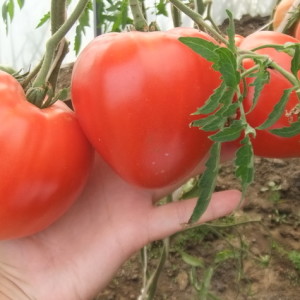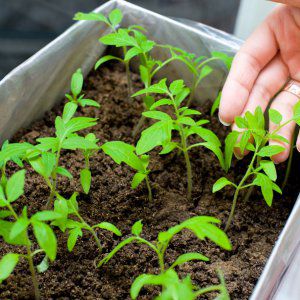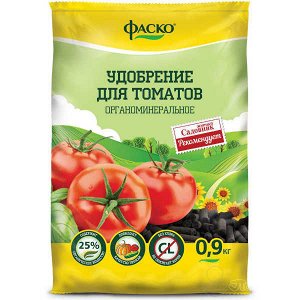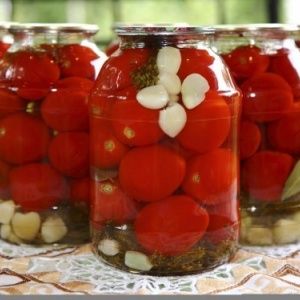Fleshy, tasty and very aromatic tomato "Danko": we get a rich stable harvest
The Danko tomato variety is known among gardeners and is loved by them for their excellent taste and unpretentiousness. Its fruits resemble a heart, and tomatoes of this shape are considered the most delicious.
In this article, we will tell you about the distinctive features of the variety, its advantages and disadvantages, the peculiarities of growing and proper care of tomatoes.
The content of the article
Description of the variety
The main distinguishing feature of the Danko variety is its versatility: it is suitable for growing in climatic conditions of any region.... These tomatoes grow both outdoors and in greenhouses and tolerate both high and low temperatures.
 Danko variety is medium early, tomatoes ripen four months after planting. The fruits are large, heart-shaped, and the weight of some specimens can reach 250-300 g. Ripe tomatoes have a bright red color, sweet taste and strong aroma, suitable for preparing salads.
Danko variety is medium early, tomatoes ripen four months after planting. The fruits are large, heart-shaped, and the weight of some specimens can reach 250-300 g. Ripe tomatoes have a bright red color, sweet taste and strong aroma, suitable for preparing salads.
Danko is resistant to fungal and viral diseases of the nightshade. It is characterized by a good presentation, but it does not tolerate transportation well: this is facilitated by its ability to crack and thin skin.
Average yield: about 3-3.5 kg of tomatoes can be harvested from one bush.
Growing seedlings
Seed preparation should be started at the end of February. After purchasing them or self-selection, pay attention to the quality of the planting material. Check the seeds carefully and separate the empty ones.
To check, fill the planting material with salted water (10 g of salt per glass of water). The floating seeds are empty, and the ones remaining at the bottom can be used for planting. After that, carry out disinfection potassium permanganate solution or hot water.
 You can buy the soil or prepare it yourself. An important condition is the correct ratio of sand, peat and fertilized soil. It is good if lime, organic matter, mineral fertilizers are present in the soil. The soil must have good water and air permeability.
You can buy the soil or prepare it yourself. An important condition is the correct ratio of sand, peat and fertilized soil. It is good if lime, organic matter, mineral fertilizers are present in the soil. The soil must have good water and air permeability.
After the ground is prepared, take boxes or other containers about 15 cm high.It is convenient to use peat-distilled tablets as containers:
- advantages: they are very convenient when transplanting seedlings to a permanent place, they are planted with the plant, serve as a good fertilizer for it;
- disadvantages: used only once, expensive, you need to constantly monitor that the peat does not dry out.
You can also grow seedlings in separate cups:
- advantages: cheap, compact, reusable, it is easy to remove seedlings from them;
- disadvantages: inconvenient to carry, during transportation the roots may be damaged.
Also used boxes (wooden, plastic, foam):
- advantages: ease of transportation, low price;
- disadvantages: during transplantation, the seedlings may be damaged, which is why the plants will take root for a long time.
Seeds are planted to a depth of 1-1.5 cm, leaving free space between plantings - about 5 cm.After planting, the land is abundant watered and covered with plastic wrap on top.
Seedlings appear 8-10 days after planting the seeds, after which they need to provide the necessary conditions for growth (no drafts, artificial or natural lighting for 13-14 hours and the temperature not lower than 18 degrees during the day and not lower than 15 degrees at night). Keep the soil moist and prevent it from drying out. It is better to use warm water for watering, and water with a spray bottle.
Top dressing not needed before transplanting in open ground if the plants look strong and healthy. If the tomatoes look depressed, prepare a weak solution of complex fertilizer. Plants must be dived after the first leaves appear. This helps prevent pulling tomatoes and stimulates their root system.
Growing tomatoes
Before planting in the ground, the seedlings need to be hardened, adapted to lower temperatures. Greenhouse plants need it too. Hardening improves adaptation after transplanting.
Tomatoes are best planted in open ground after frost. The soil should warm up. The optimal time for planting is late May - early June. Seedlings can be planted in the greenhouse as early as the twentieth of May, while it is better not to plant Danko too often - this variety usually grows strongly there. After transplanting, the tomatoes are watered abundantly, and after that, they do not need to be watered or fertilized for 2-3 weeks.
 Due to its drought tolerance, the variety does not need frequent watering. It will be enough to do this once a week, and in case of extreme heat - once every four days. After that, it is imperative to loosen the soil - this will provide oxygen access to the tomato roots.
Due to its drought tolerance, the variety does not need frequent watering. It will be enough to do this once a week, and in case of extreme heat - once every four days. After that, it is imperative to loosen the soil - this will provide oxygen access to the tomato roots.
Bushes need to weed and huddle. To avoid doing this too often mulch the tomatoes. This will keep moisture in the soil longer and the weeds will grow more slowly. Peat or humus can be used as mulch.
Deleted every week stepsonsthat prevent fruiting. If you do not remove them, then the tomatoes will grow and will not bear a large number of fruits.
Danko is usually formed into 2-3 stems. Tomatoes need to be tied to supports - so the fruits will less contact with the ground and rot. Over time, it becomes necessary to tie the bush with twine.
During the growth of tomatoes, you need to fertilize 2-3 times with complex fertilizer: you can use both organic and mineral fertilizers.
Possible growing difficulties
Usually in the greenhouse this tomato grows very much, it needs to be constantly tied up and supported.... In this case, you can advise not to delay tying or pruning a bush, because it is much more difficult to work with a highly overgrown plant.
If the soil is too wet, the tomatoes may begin to crack. Start watering them less often and less, 3-4 liters of water will be enough for each bush.
Diseases and pests
Danko is resistant to fungal and viral diseases of the nightshade. However, these diseases can be transmitted through infected tomatoes from neighboring beds. For this reason, tomatoes should not be planted next to other nightshades. Excessive watering of plants, poor ventilation and strong growth of the bush can be other causes of diseases.
Of the pests, Danko is most susceptible to attack by spider mites, whiteflies and bear. Such means as Fitoverm and Karbofos are actively fighting them.
The nuances of growing in an open field and a greenhouse
For planting in open ground, it is necessary to select the most beautiful, strong and healthy plants, since the weaker ones can die after planting. In such conditions, it is usually not necessary to tie up tomatoes: they do not grow much on the street. Transplanting can be carried out even if the seedlings have already begun to bloom, and this will not affect the yield.
When planting in a greenhouse, you need to remember that Danko always grows stronger in it. Prepare garter supports in advance. Another important condition for growing this tomato in a greenhouse is ventilation.
Harvesting and application of the crop
You can harvest the fruits after 110-120 days from the day of planting. Due to the thin skin, transportation of tomatoes and their long-term storage is not recommended.It is also better not to grow these tomatoes for sale and in large quantities.
The Danko variety has a salad purpose, it is better to use such tomatoes immediately. They also make wonderful winter salads, all kinds of lecho, adjika and sauces.
Advantages and disadvantages of the variety
The main advantages of the variety include:
- Large beautiful heart-shaped fruits.
- Excellent taste and pleasant aroma.
- Compactness.
- Versatility.
- Unpretentiousness.
- Drought resistance.
- Immunity to many nightshade diseases.
Disadvantages:
- The need to form a bush.
- It does not tolerate transportation and is easily cracked due to its thin skin.
Farmers reviews
In general, the reviews about Danko are positive. Many gardeners fell in love with it for its excellent taste and unpretentiousness, but some summer residents developed a negative attitude towards the variety due to the fact that it grows strongly.
Julia, Samara: “I've been growing Danko in my dacha for five years now. I am quite happy with this tomato. The choice of pink tomatoes for our climate is not that great: almost all varieties are recommended to be grown in a greenhouse. I do not have the opportunity to come to the dacha every day to ventilate the greenhouse and take care of the tomatoes. Therefore, I chose the Danko variety, because it is suitable for open ground. This tomato pleased me: the harvest is stable, the fruits are tasty and quite large. "
Galina, Smolensk: “I liked it very much: the variety is fruitful and disease-resistant, the tomatoes are delicious and beautiful. It is desirable to carry out standardization of brushes. "
Olga, Novgorod: “I read positive reviews about the variety. Maybe I just looked after poorly, but other varieties showed themselves much better. I grew Danko both in the open field and in the greenhouse. He did not show himself well anywhere. I didn't even like the bush itself: it is difficult to pinch it, the branches look like panicles. Already in the seedlings this oddity was visible. In the greenhouse I don't even remember collecting something from it. In the open field, the fruits began to appear late, their appearance did not please me. "
Conclusion
The Danko tomato variety is universal: it grows well in any climatic conditions and is suitable for different regions of our country. It is not recommended to grow such tomatoes for sale or in large quantities: they are poorly stored and prone to cracking.
This variety is very unpretentious, and its fruits are beautiful, fragrant and tasty, therefore Danko is popular among gardeners and is a welcome guest on the table both in summer - in fresh salads, and in winter - in blanks or juicy lecho.